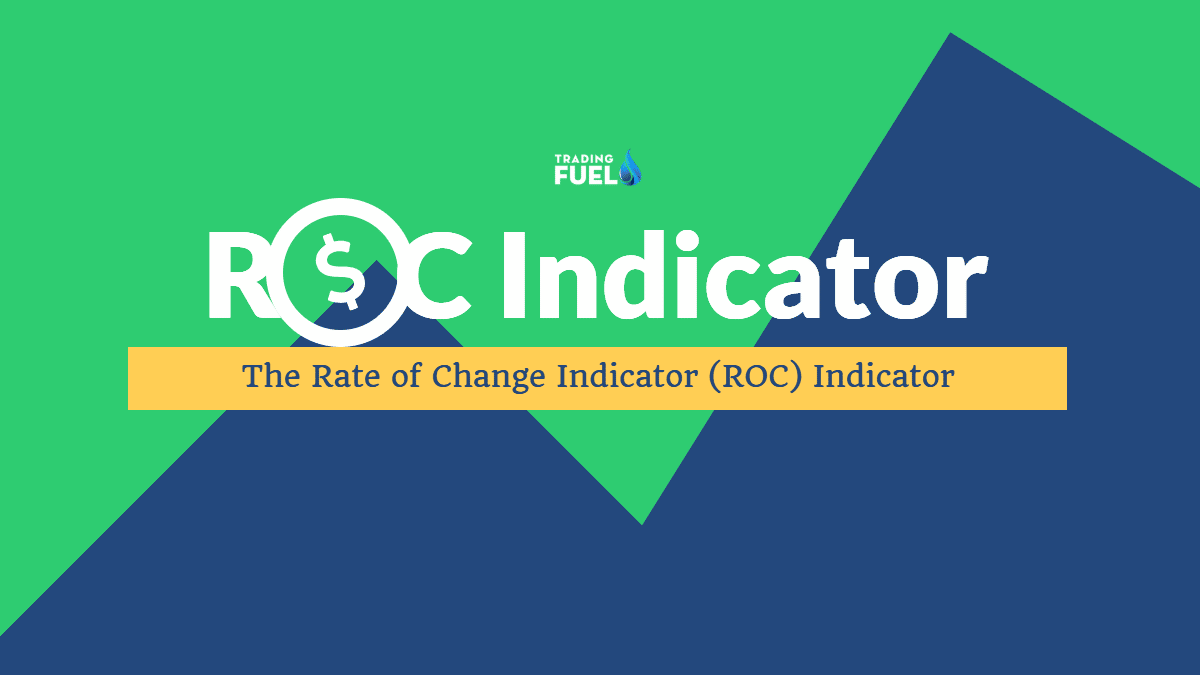The Rate of Change Indicator (ROC) is an oscillator indicator, that measures the percentage change between the current price and the “n” period past price.
This momentum indicator helps a trader to identify a general trend, oversold, overbought conditions as well as divergences. As a momentum indicator, ROC gives signals including centreline crossovers, divergences and overbought-oversold readings.
The ROC indicator is useful to confirm price moves or find divergences, and it is also used as a guide for determining overbought and oversold conditions.
How to calculate the Price Rate of Change Indicator?
ROC Indicator measures the rate of change in price, based on the past period.
The formula of Rate of Change is as below:
ROC = [(Close – Close n periods ago) / (Close n periods ago)] × 100
Interpretation:
- Rate of Change indicator gives the signal for overbought and oversold conditions, and as noted above it is a pure momentum oscillator that measures the percentage increase or decrease in price over an ‘n’ period.
- ROC indicator moves around 0-line (From positive to negative.)
- The ROC line moves from negative to above the 0-line, when the momentum increases. So, as a price increase, the ROC remains Positive.
- When momentum decreases, the ROC line moves from positive and above the 0-line to negative. So, with the falling price, it remains negative.
How to identify Trend with Rate of Change Indicator?
Momentum oscillators are the best indicators for trading ranges or zigzag trends, and they can also be used for identifying the overall direction of the underlying trend.
There is always reversal in trend with the shortest timeframe and then after it spreads to the other timeframes.
- There are approximately 240 trading days in a year.
- This can be broken down into 120 days per half-year, 60 days per quarter and 20 days per month.
- In short, the long-term trend is up when both the 240 and 120 day period ROC is Positive.
- It means that prices are higher now than they were at 1 year and 6 months ago.
- Long positions taken by investors (6 or 12 months ago) would be profitable.
How to use ROC Indicator in Technical Analysis?
The use of the ROC indicator is similar to another momentum oscillator, but here we will explain unique methods that can be used for trading.
Read also: “What is Swing Trading?“
USE: ROC Setting – with Moving Average for Trend Trading
Whenever you trade with the trend there are high chances of winning trades.
With the help of trend analysis, the ROC indicator can be used as a timing tool. The roc indicator helps the trader to find the points that are very helpful for buying at the low price or the dip in the uptrend or selling near the high point or at the rally in the downtrend.
- To use the ROC indicator as a timing tool, we will use the 10 and 20-day moving average.
- Setting for ROC = 9-period.
- Look for buy, when the ROC is negative during the uptrend, but it starts rising.
- Same for a downtrend, when the ROC indicates the weak signal and start raising you can go for sell.
- To buy and sell, confirm the trend with ascending (for uptrend) and descending (for downtrend) order.

As you can see from the above example, there was an uptrend in 15-min, time frame, at point A, the indicator was weak but starts rising and moving average also gives the buy signal.
You can take double conformation with the different candlestick charting pattern.
ROC can be used for Divergence like other indicators.
Conclusion:
The ROC oscillator measures the percentage change of price with respect to the time period. AN Upward direction of ROC reflects the sharp price move in an uptrend in advance and a downward plunge in ROC indicates price decline.
Traders can use bullish and bearish divergence with the Rate of Change momentum oscillator, to identify sharp moves. The positive ROC reflects the increase in price movement and negative ROC reflects a decline in price.
About Us:
Trading fuel is a free blog site made with the purpose of providing maximum knowledge to traders and investors. All strategies mentioned in this blog site is only for educational purpose and we are not responsible for any profit or loss made with these strategies.

